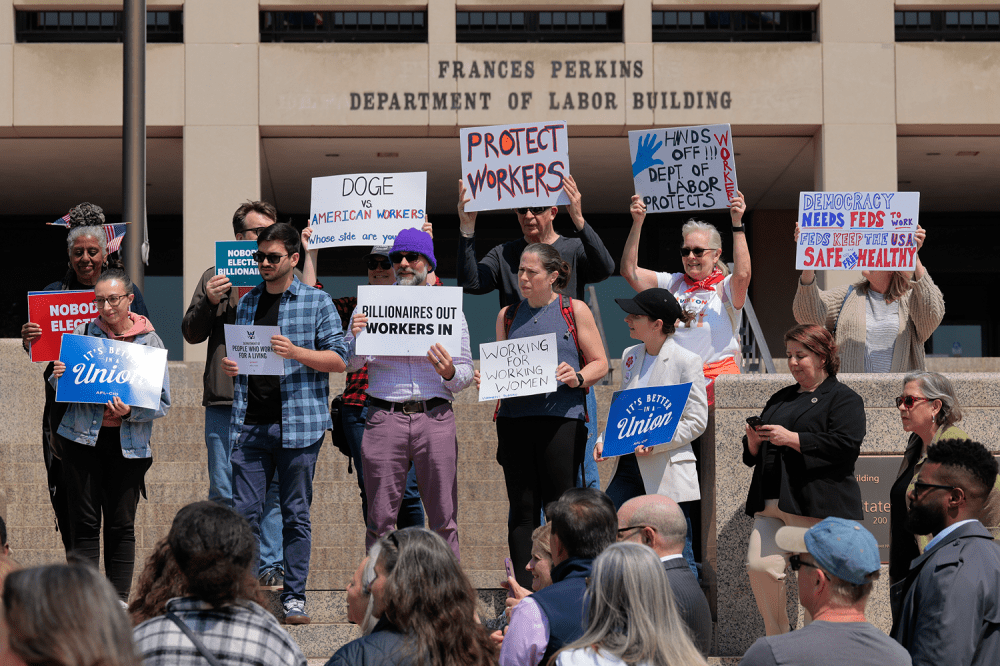In 2019, journalist David Klion described the United States as “the sick man of the 21st century,” a country suffering from elite stagnation and institutional fatigue. Six years later, the diagnosis remains accurate. The problem is less ideological than infrastructural—a form of technical debt. In software, “technical debt” is the cost of deferred maintenance: Each quick fix or postponed upgrade leaves a system more fragile.
Governments accumulate the same liabilities when they defer investments in personnel, modernization, and oversight. The bill comes due, and capability erodes faster than legitimacy. That erosion now shapes not only domestic performance but also how the United States projects authority abroad.
State capacity is the government’s ability to reliably design, implement, and sustain policy. For half a century, the United States has treated capacity as expendable. Since the late 1970s, a pattern of austerity and outsourcing has hollowed the administrative core of U.S. power. What was once a durable bureaucracy capable of planning, coordinating, and enforcing national strategy has become a patchwork of contractors, temporary offices, and aging systems that often cannot execute the ambitions set for them.
Beginning in the late 20th century, presidents and reform commissions urged government to operate, as they saw it, like a business, emphasizing efficiency and cost control over reliability. President Jimmy Carter’s 1976 campaign promised to bring “tight, businesslike management” to Washington. President Ronald Reagan’s inaugural address in 1981 declared that “government is not the solution to our problem; government is the problem.”
A decade later, President Bill Clinton and Vice President Al Gore’s National Performance Review initiative pledged to make government “work better and cost less,” importing private-sector metrics and performance targets into the bureaucracy. Each iteration deepened the expectation that agencies should act like firms rather than public institutions—a trajectory analyzed by historian Gary Gerstle in his book The Rise and Fall of the Neoliberal Order, which traces how managerialism became a bipartisan faith in market logic within the state itself.
The result was a state that kept its form but lost its depth. Tax expenditures, vouchers, and indirect subsidies replaced visible public programs. As citizens experienced policy through private intermediaries such as banks, insurers, and employers, the federal government became both omnipresent and invisible. Political scientist Suzanne Mettler called this the “ ”: government that acts through the market rather than beside it. The more invisible it became, the easier it was to attack. The politics of austerity survived because its consequences were hidden.
The invisibility of state action also weakens democratic accountability. When government operates through private proxies, citizens experience policy outcomes but not the institutions that produce them. This disconnect erodes the feedback loop between performance and trust. A public frustrated by delays or denials often blames “bureaucracy” in the abstract rather than the structures or appropriations responsible.
Over time, that ambiguity blurs lines of responsibility and undermines civic literacy about what government does and why. Reversing this requires not only a technical modernization but also a cultural one: making the machinery of governance visible enough for citizens to recognize its value.
Technology was supposed to compensate. Performance management systems multiplied, yet they generated data without insight. Budget procedures such as the Office of Management and Budget’s Circular A-11 formalized compliance rituals that substituted reporting for reflection. By the 2000s, federal agencies spent most of their information technology budgets maintaining legacy systems written in obsolete languages. Modernization contracts often reproduced the same dependencies, locking agencies into vendor ecosystems that they could not oversee. Each reform promised efficiency but produced vulnerability instead.
Outsourcing deepened the problem. Contracting was sold as flexibility, yet it hollowed out institutional memory. The Defense Department reported more than half a million full-time contractor equivalents alongside its civilian workforce. The Energy Department and the Department of Veterans Affairs followed similar ratios. Analysts cycled out before seeing the results of their own programs. Oversight staff dwindled, and Freedom of Information Act backlogs grew. The oversight loops that once helped the state correct itself became intermittent and reactive.
The COVID-19 pandemic revealed what decades of deferred maintenance had created. Agencies charged with disbursing relief funds or processing benefits worked through systems designed for far smaller volumes. Some programs succeeded only because cross-agency task forces improvised fixes that bypassed normal procedures. The same resilience that kept government functioning masked how brittle it had become.
By mid-2025, that brittleness was impossible to hide. President Donald Trump’s February executive order on domestic government efficiency imposed rapid staffing cuts across civilian agencies. Nearly 150,000 federal employees departed through layoffs, buyouts, or early retirements, and another roughly 150,000 workers were placed on paid leave pending reorganization.
The intention was modernization. The effect was paralysis. Grant disbursements slowed, audits were suspended, and critical permitting backlogs doubled. Trump’s so-called Department of Government Efficiency did not break a functioning machine; it exposed one already in deficit.
These failures have international consequences. Allies now confront a United States that can fund commitments more easily than it can implement them. NATO coordination meetings proceed without U.S. representation at working levels. Defense cooperation agreements lapse as legal offices miss renewal deadlines. In a global system that depends on reliable U.S. execution, administrative fragility becomes a strategic risk. State capacity is credibility.
Administrative fragility also undermines the country’s credibility abroad. Foreign ministries and international organizations depend on predictable American follow-through. When agencies cannot execute, commitments fracture, and allies hedge. The gap between U.S. funding promises and implementation timelines shapes how other governments plan their defense and economic policies. Bureaucratic capacity, in this sense, is not only a domestic concern but also a core instrument of power. The ability to fulfill commitments abroad begins with competence at home.
Other powers have recognized this dynamic. The European Union’s regulatory apparatus and China’s sprawling development bureaucracy both convert administrative coherence into geopolitical influence. When the United States struggles to coordinate its own agencies, it forfeits leverage in settings where procedural reliability is power. Competence, not just capability, has become a metric of global standing. Rebuilding state capacity is therefore not nostalgia for mid-century bureaucracy; it is a strategic necessity in an era when governance itself is a contest of systems.
Reform cannot start everywhere at once, but repair begins where consensus still exists. Congress can act on visible service failures that cut across ideology. The Internal Revenue Service’s shows that targeted funding, iterative updates, and transparent performance metrics can restore trust while improving efficiency. Similar pilots could stabilize agencies whose breakdowns the public notices most, including the Federal Emergency Management Agency, the Social Security Administration, and the Centers for Medicare and Medicaid Services. When competence is visible, legitimacy follows.
Cybersecurity investment offers another near-term opportunity. The Cybersecurity and Infrastructure Security Agency already coordinates state and local partnerships, but on a scale disproportionate to the risks that it manages. Treating cybersecurity as national security would justify predictable multiyear funding, standardized cyber hygiene protocols, and exchange programs between federal and private-sector professionals. These measures are technocratic, not ideological, yet they generate political returns through reliability.
The deeper challenge is human infrastructure. Pay compression and limited advancement have driven talent toward the private sector for decades. Rebuilding career ladders within the civil service would reverse that migration. Indexing pay to market equivalents, creating apprenticeship pipelines, and restoring mid-career training would make government once again a place where expertise accumulates instead of evaporates. The Office of Personnel Management could publish open data on retirement risk and skill shortages, aligning incentives for long-term planning.
In the same spirit, the balance between in-house expertise and contracted labor must change. Outsourcing should supplement, not replace, institutional knowledge. The government’s own audits show that insourcing core technical functions, procurement, IT, and analytics results in higher quality and lower cost over time. Maintenance should be understood as a strategic function, not a discretionary one.
Repair also depends on governance. Expanding collective bargaining within the federal workforce would stabilize retention and create feedback channels between management and staff. The decline of organized labor has deprived the government of both interlocutors and institutional conscience. Restoring inspector general budgets would strengthen accountability.
And enforcing the would prevent presidents from withholding funds that Congress has appropriated, protecting administrative continuity from partisan interference. Designed after Watergate to preserve the separation of powers, the act ensures that presidents execute rather than suspend Congress’s will. Enforcing it today would reaffirm that bureaucratic discipline is constitutional discipline—the habit of carrying out commitments once made.
Administrative repair at home would also reinforce democratic credibility abroad. Allies and adversaries alike judge the strength of U.S. leadership by its capacity to govern itself. Rebuilding that capacity is therefore not only an act of domestic reform but also a reaffirmation of constitutional democracy as a system capable of self-correction. When Congress functions as a coequal branch and the civil service performs with reliability, it strengthens the foundations of U.S. diplomacy. The renewal of state capacity is, ultimately, the renewal of U.S. legitimacy.
Restoring capacity is therefore a civic project as much as a bureaucratic one. Citizens cannot sustain confidence in institutions that they rarely encounter or do not understand. Visible competence, the timely arrival of a benefit, the smooth operation of a public website, and the consistent enforcement of a rule, are the most persuasive arguments for democratic government. Each successful act of administration becomes an act of persuasion, reminding citizens that the state is neither distant nor hostile but capable and fair. Legitimacy accrues not from rhetoric but from reliability.
Rebuilding legitimacy will require more than competence. Policy advocate Heather McGhee has shown how racialized zero-sum thinking erodes public support for shared goods. A credible renewal of administrative capacity must make equity a matter of design. Reliability must be even across constituencies so that citizens experience the state as consistent rather than conditional. Equity, in this sense, is an engineering principle: Systems that deliver unevenly are systems that fail under stress.
Governance, like infrastructure, decays when maintenance is deferred. The metaphor of technical debt clarifies what austerity obscured: Neglect incurs obligations, and those obligations compound. The United States cannot innovate its way out of decay; it must restore the capacity to maintain.
History shows that such renewal is possible. The civil service reforms of the 1940s, the “Great Society” buildout of the 1960s, and the digital transition of the 1990s all expanded administrative capability when legitimacy and investment aligned. Whether the United States pays that debt will determine not only the health of its government but also the credibility of its leadership abroad.
The post The U.S. Government’s Repair Bills Are Coming Due appeared first on Foreign Policy.




